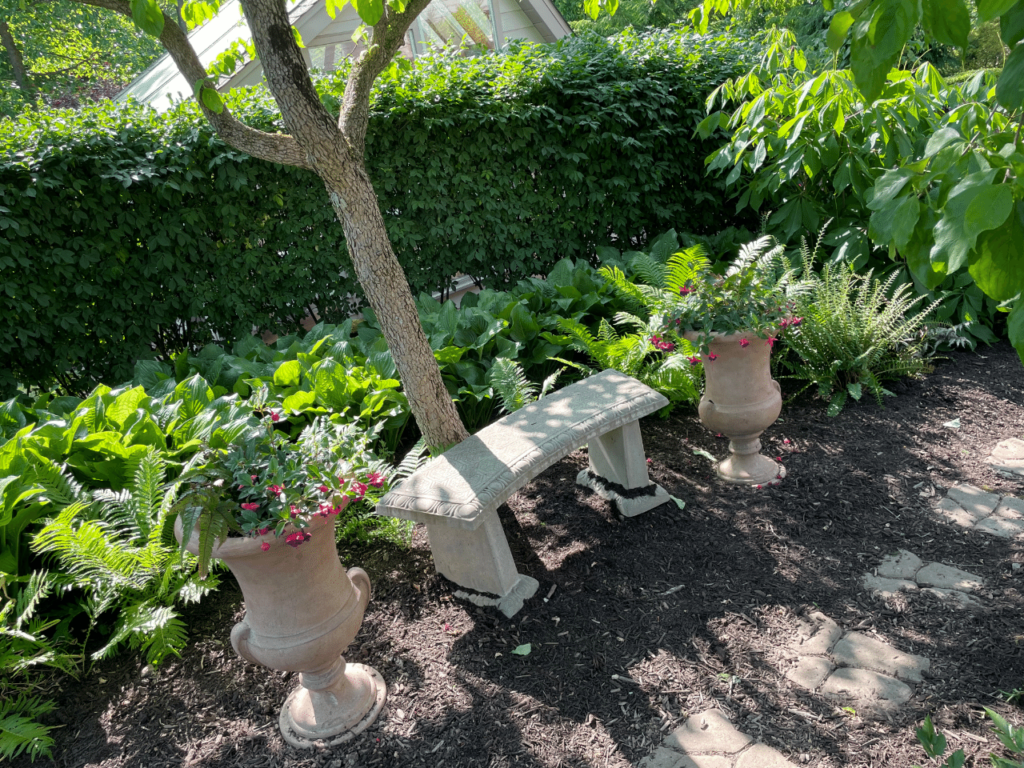Path of
LEAST RESISTANCE
The Path of Least Resistance is a woodland garden that provides an excess of what nature and gardening can provide in a restorative and healing way. Someone once said that in nature a river winds its way to the ocean by taking the path of least resistance.
This garden was named to remind us that as humans, we typically take the path of least resistance because it is the easiest. This serves as a reminder that sometimes in life you have to take a more difficult path to grow and move forward with adversities in life. Just as nature is ever changing, so too can the direction in one’s life. At the beginning of the inception of this garden, beside the trees, most of the plants were rescued from nurseries for $3.00 or less. During its inception, the garden acquired a nature friend, a garden snake that has become somewhat controversial. Should it go, or be allowed to stay? In the past 5 years, the garden has transitioned to accommodate more shade plants, such as ferns, astilbe and no sighting of a snake.



Healing & Restorative Properties
Engaging in a dose of the trees and the woodland features in this garden can reduce stress, anxiety and tension. It can also help promote relaxation and peace. Trees are often considered the lungs of the earth, inhaling the greenhouse gas carbon dioxide (CO2), and exhaling harmless chemicals like water vapor and oxygen (O2). Trees can also help to boost the immune system and promote overall health and wellbeing from other emitted (good) chemicals. Studies have shown that regular use of woods or parks for physical exercise reduce the risk of poor mental health, whereas no such pattern was found in non-natural settings like gyms.
Suggested Therapeutic Activity
Sit on the bench under the canopy of trees in this garden. Let the positive natural effects of the surroundings embrace you and while you are relaxing, look up into the dogwood tree. Notice the branching and take time to relate the branches and extension of its arms with your life and its journey in the past or present; this can be used towards the future as well.
Volunteer Schedule
The garden effort on a yearly basis is approximately 10-15 hours during the spring into fall seasons. Once every 2-3 weeks, for about 1-2 hours is an appropriate time frame for support that is needed.
Seasonal Maintenance Description
Fertilizing, mulching, watering, weeding, pruning, pest and deer control applications.
Adopt the Garden
Cost: $500 yearly
Signage with name/company name will be in placed in the garden for one year.












